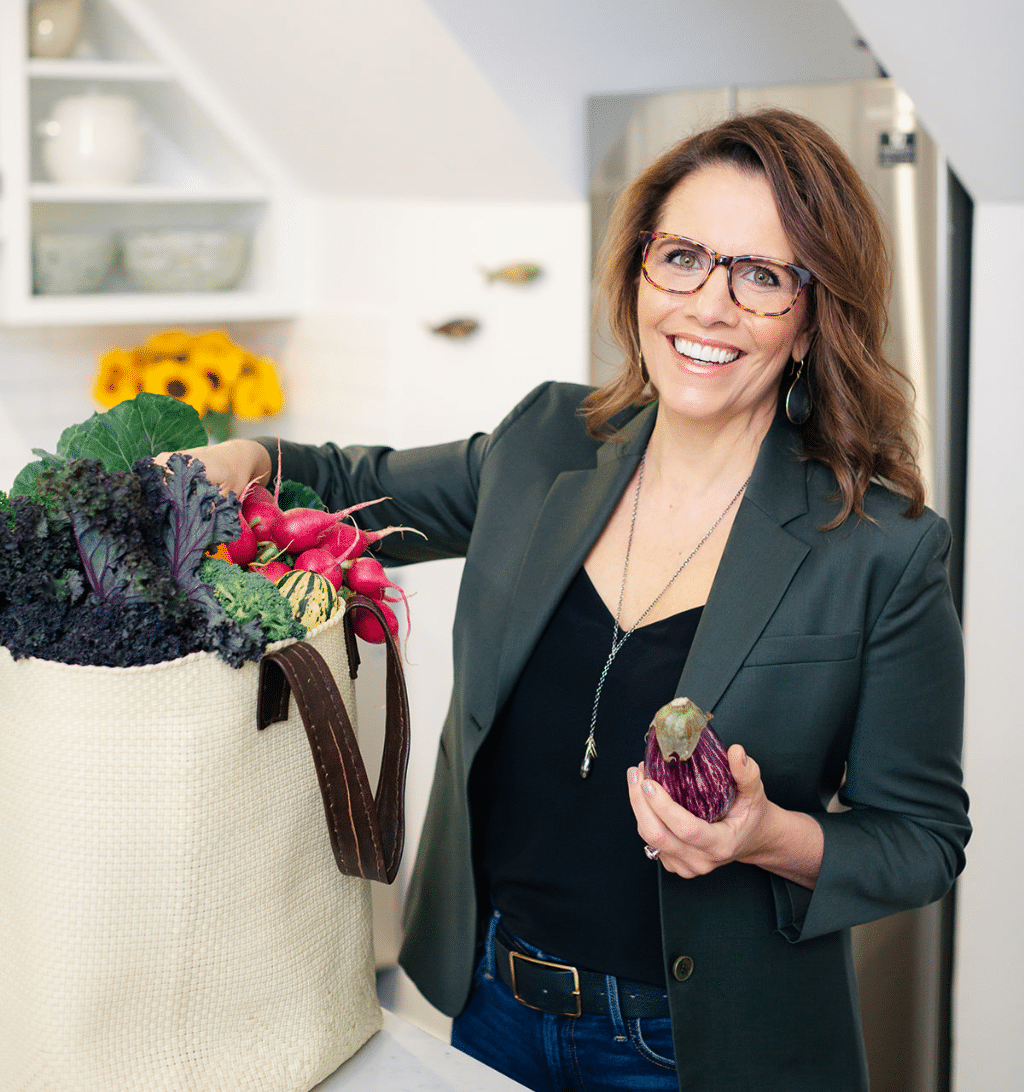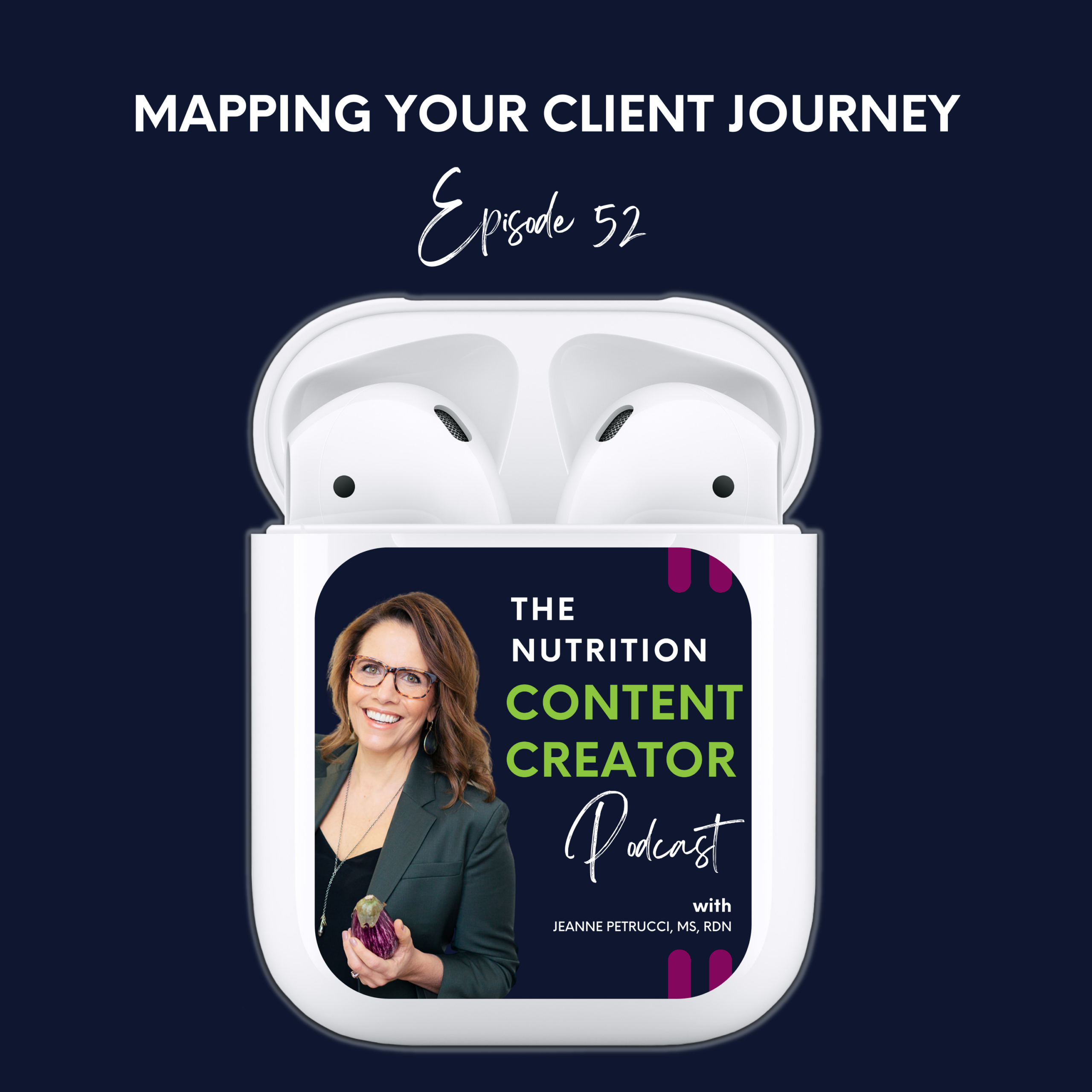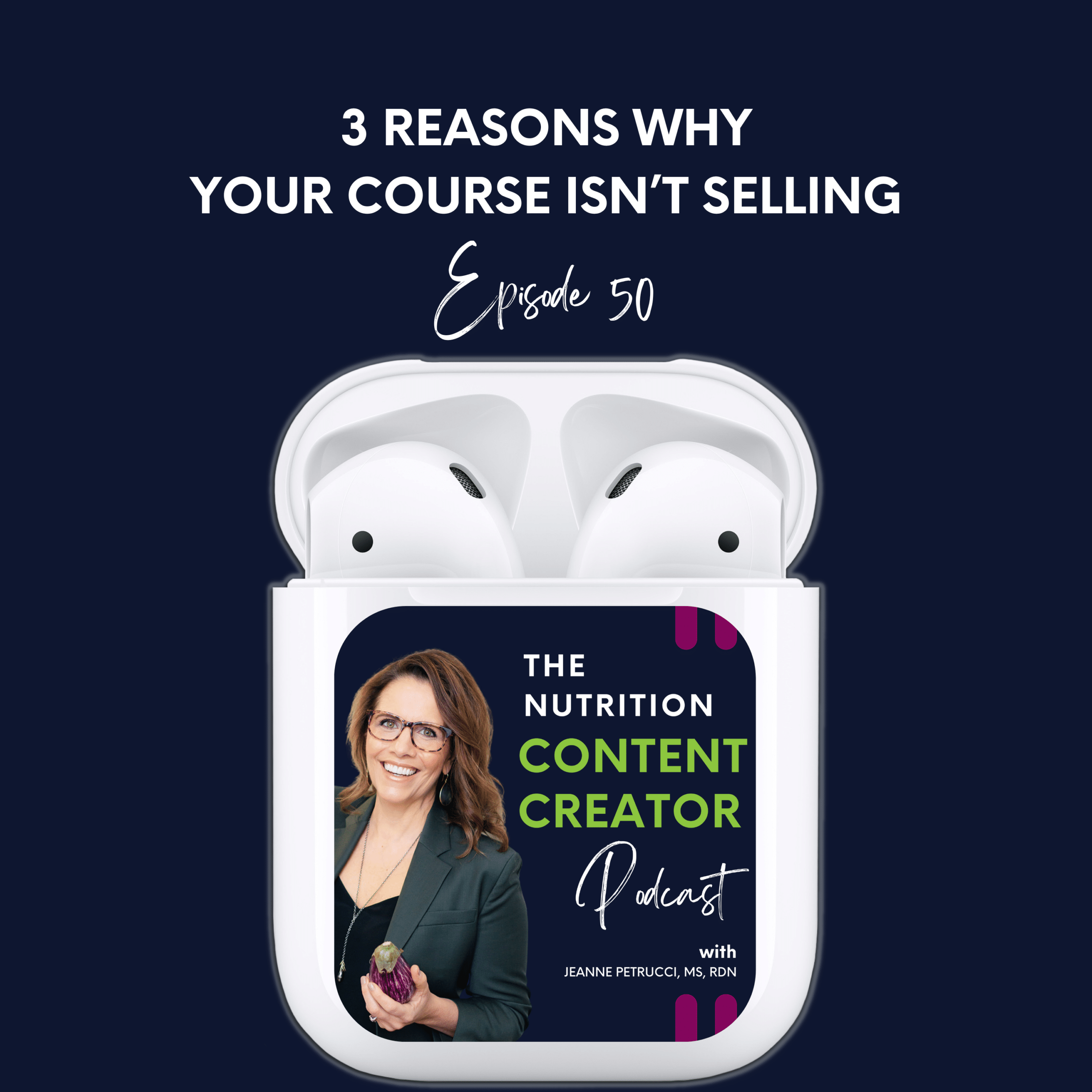2. Your Marketing Funnel and Behavior Change

Let’s explore the intriguing connection between the sales and marketing funnel and health behavior change theory. This connection has significant implications for how we create content that caters to clients at each stage of their health journey, ultimately leading to more positive outcomes for clients and a leak-proof sales funnel that drive a more profitable practice. Let’s be clear, we are NOT in the nutrition business. We are in the health behavior change business. And as such, we need to have an evidence-based foundation to support our clients with a map to success. The same behavior change model we use to move clients to sustainable change also moves them through our sales funnel. We can use this model to drive positive health and business outcomes! If we don’t align our sales funnel with evidence-based practice it will have more leaks than a colander and growth will not happen. We’ll cover:
- The Stages of Change model,
- A sales funnel and its different stages,
- Key implications for content creation in your practice,
- How your sales funnel aligns with health behavior theory,
- Content Cure for the Week – you will find three pieces of content, each aligning with a different place in your ideal client’s health journey as well as your sales funnel.
The Stages of Change Model
Let’s begin with a brief overview of the model we use for all our content creation, the Stages of Change model, also known as the Transtheoretical Model. This model, developed by Prochaska and DiClemente, is widely used by health and wellness professionals to understand and support individuals as they navigate the process of changing nutrition-related behaviors.
The model outlines five key stages of change
- Precontemplation: In this stage, individuals are not yet aware of or considering the need for change. They may be uninformed about the consequences of their current behavior or may have tried to change in the past without success, leading to a defeatist attitude.
- Contemplation: During the contemplation stage, individuals start to recognize the need for change and begin weighing the pros and cons. They may become more aware of the benefits of change but may also struggle with ambivalence, which can cause them to remain in this stage for an extended period.
- Motivation or Preparation: In this stage, individuals have decided to change and are becoming motivated to actively plan the steps they will take to achieve their goals. This stage often involves setting a start date, gathering resources, and seeking support and motivation from others.
- Action: The action stage is where individuals put their plans into practice and start to make the desired behavior changes. During this stage, individuals need support and reinforcement to maintain their motivation and commitment to change.
- Maintenance: After successfully implementing the new behavior, individuals enter the maintenance stage, where they work to sustain the change over the long term. In this stage, individuals focus on preventing relapse and consolidating the gains they have made.
It’s important to note that this path to change is dynamic with people often revisiting previous stages to once again move forward. The behavior change model is a visual representation of your client’s journey, from initial awareness of wanting to change to sustain a behavior change.
What about a sales funnel?
A sales funnel is a visual representation of the customer journey, from initial awareness of your brand to a completed sale and a sustained long-term relationship. The sales funnel can be broken down into three key stages: attract, serve, and retain. Now – Imagine two lines: One for HBT – from precontemplation > maintenance and another layer on top from Attract, Serve, to Retain. Both of these continuums are dynamic meaning that people will not always trend in one direction. However, once someone opts into listening to you [they have moved beyond contemplation/attraction] you generally can move on to nurturing them to move through the rest of the frameworks. Let’s take a closer look at each stage of the sales funnel, how it aligns with HBT, and the types of content you should create for each one, along with some examples.
Stages of a sales funnel
1 – Attract stage: The first stage of the sales funnel focuses on attracting potential clients to your brand. At this stage, your goal is to create content that raises awareness, generates interest, and drives traffic to your website or other platforms. This is the same type of content that will resonate with someone in precontemplation or contemplation phases.
Types of content for the attract stage:
- Blog posts
- Videos
- Social media content
- Free webinars
- Ebooks
- Live events
- Handouts
- Examples of content to attract clients:
- An informative blog post on a trending topic in your niche
- A video series showcasing your expertise in a specific area
- A free ebook that provides valuable insights and tips
- Social media posts that highlight your unique approach and brand personality
2 – Serve: The second stage of the sales funnel involves serving your potential and existing clients by providing valuable content that nurtures relationships and encourages them to take action [opting into your paid offers]. This stage is crucial for building trust and demonstrating your expertise. It is also the stage of the sales funnel that aligns with motivation – this content should motivate your clients and move them along to taking action [by opting into your paid offers].
Types of content for this stage:
- Email sequences
- Webinars
- Private Facebook group events like live Q&As
- Challenges
- Weekly newsletters
- Examples of content to serve clients:
- A targeted email sequence that provides valuable tips and resources
- A webinar on a niche-specific topic that addresses common pain points
- A challenge that encourages participants to make meaningful changes over a shorter period [challenges are generally shorter than courses]
- A weekly newsletter that offers exclusive content, tips, and resources
- Many people might remain in your funnel for a long time before opting into a paid offer [and most actually never will opt into a paid offer].
Your objective is to keep delivering valuable content to people in this stage so that those who eventually decide to take action can easily raise their hands to work with you. The length of time from someone entering your sales funnel to opting into a paid offer is called your sales cycle. You can shorten this cycle by being laser-focused on who you are talking to and consistently providing value. Ultimately, a certain percentage of people will opt into your offer and you can move on to the next stage.
3 – Retain: The final stage of the sales funnel is retention. In this stage, you focus on building loyalty and maintaining strong relationships with existing clients [those who have already opted into working with you, ensuring they continue to work with you and refer others to your services. This stage is where people have taken action and are moving toward maintenance.
Types of content for the retain stage:
- Ongoing resources
- Exclusive events for paying clients
- Webinar Series
- SMS messaging through EHR
- Special offers
- Examples of content to retain clients:
- Regular resources that help clients maintain progress and continue learning [sending cooking videos to keep them inspired in the kitchen]
- Exclusive events or webinars that provide added value for existing clients
- Personalized SMS messages that offer support and encouragement letting clients know they are still on your mind
- Special offers or discounts on additional services or products – like a first chance at a new product for a reduced price.
Key implications for content creation in your practice
First, by understanding the different stages within both the Stages of Change model and the sales and marketing funnel, you can tailor your content to effectively engage clients and guide them through their journey. For example, you can reflect on who you are going to market your new course to. Should you spend time trying to attract people to your course in the contemplation phase? You should be able to answer this question now.
The answer is probably not. You will have BETTER success with marketing a course to someone ready to take action [which is after contemplation].
Creating targeted content: With a clear understanding of the stages, you can create content specifically designed to address the needs and concerns of clients at each stage. This targeted approach ensures that you provide the right information at the right time, making your content more impactful. For example, content appropriate for clients in the maintenance phase might be weekly newsletters or events that cover topics they are already familiar with. Building trust and rapport: As you create content that resonates with clients at each stage, you’ll naturally build trust and rapport with them. This relationship-building aspect is essential for turning potential clients into satisfied, loyal customers who are more likely to recommend your services to others.
Optimizing the client journey: By recognizing the connection between the sales and marketing funnel and health behavior change theory, you can optimize the client journey. This means creating a smooth, seamless experience that guides clients from one stage to the next, ultimately leading them to engage with your services and become satisfied, long-term customers. By understanding and optimizing this process, you can create content that efficiently moves clients through BOTH the health behavior change continuum and the stages of the sales funnel – ultimately leading to a more successful outcome for clients AND sustainable business.
Content Cure for the week
This week your Content Cure is a bundle of content, including three pieces of content that you can edit, each aligning with a different place in your ideal client’s health journey as well as your sales funnel. >>CLICK HERE TO DOWNLOAD THIS WEEK’S CONTENT BUNDLE<<
- [Attract content] For the attraction phase, I am going to challenge you to do a faceless Reel – Reels are one of the BEST ways to get in front of people who do not yet know you and may not even be thinking about changing their behavior. Adding yourself, either through a green screen effect or just overlaying your voice, will support the principle of building trust and rapport.
The reel is a video for preparing pineapple – think about what YOUR ICA would want to know about breaking down a pineapple. So much to talk about here:
- The cost-effectiveness of breaking down a pineapple vs purchasing pre-chopped
- Health benefits of pineapple
- Culinary applications
- [Serve content] For the serving phase, I challenge you to create a newsletter using the template provided. This newsletter talks about the health benefits and culinary application of fresh herbs and it comes with a high-value, ebook download. This can motivate clients to take small actions. Rewrite the newsletter to speak directly to your brand and edit the ebook. Plug into your email service and deliver to your email list subscribers. You can also use the ebook as an opt-in for the attract phase.
- [Retention content] For the retention phase, your assignment is to create a special FREE offer for your existing clients. In this week’s Content Cure, I am providing you with an email sequence for a sample special offer – a mini-culinary nutrition course. If you are already a member of our community, you will have access to PLENTY of material to put this together in your EHR or LMS of your choice. If you are not yet a member, you can edit the offer to include valuable resources that you have to share. This email sequence and offer will make your existing clients feel appreciated and will support retention and referrals. It will also support the maintenance phase of your client’s health behavior change, encouraging them to engage in kitchen activities that support their health goals [be sure that your offer is specific to your client’s concerns]
Think about the last time your health or wellness professional posted a cooking video specific to your concerns, sent you a newsletter with a valuable opt-in you could take action on, or sent you a free mini-course… exactly. You probably can’t think of a time that ever happened. So think about how this makes you more competitive and stand out as a thoughtful leader in your space. You have plenty of content to work with now so I’ll let you get started. As you start editing and planning, remember to stay laser-focused on who you are speaking to and what their deep desires and problems are.

Jeanne Petrucci MS RDN
Founder, Expert Nutrition Content Creator


